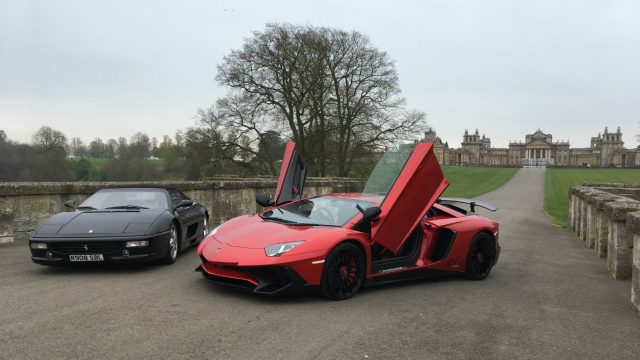 In the red corner: the Lamborghini Aventador SV. In the black corner: the Ferrari 355 GTS F1. Two prize fighters separated by 20 years and a not-insignificant 370hp. Yet these supercars have more in common than you might expect.
In the red corner: the Lamborghini Aventador SV. In the black corner: the Ferrari 355 GTS F1. Two prize fighters separated by 20 years and a not-insignificant 370hp. Yet these supercars have more in common than you might expect.
Both are Italian, for starters. And both use high-revving, naturally-aspirated engines with semi-automatic gearboxes. Also – less obviously – both are the property of two brothers: Andrew and David Bagley.
The Bagleys are the brains behind Salon Privé, an exclusive classic and supercar show hosted each summer at Blenheim Palace. Today, Blenheim serves as the suitably dramatic back-drop for our supercar showdown. Can classic hero defeat modern master?
A trip to Italy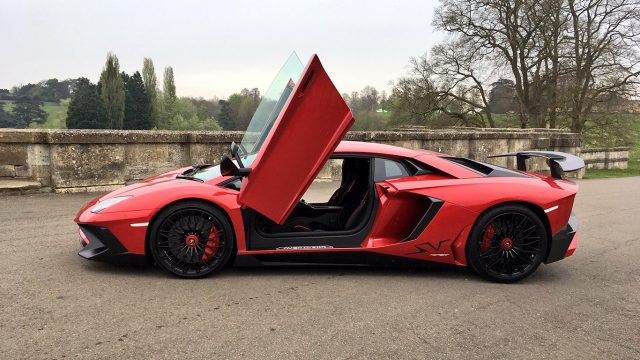
“I fell in love with the Aventador after seeing one at Salon Privé,” Andrew explains. “It looked like a fighter jet, all crazy angles.” A few years later, he realised that dream, visiting Lamborghini HQ in Sant’Agata to specify his own Aventador SV.
The SV, or Superveloce, badge was first used on the Miura SV of 1971. It denotes something special: a lighter, faster Lamborghini, built in limited numbers. “Going for a special edition such as this – one of 600 SV coupes made – does mean the car should hold its value longer-term,” says Andrew. “Just look at the prices of RS Porsches. That said, I buy cars to drive and enjoy, not as investments.” And who wouldn’t enjoy a Lamborghini?
Drawing a crowd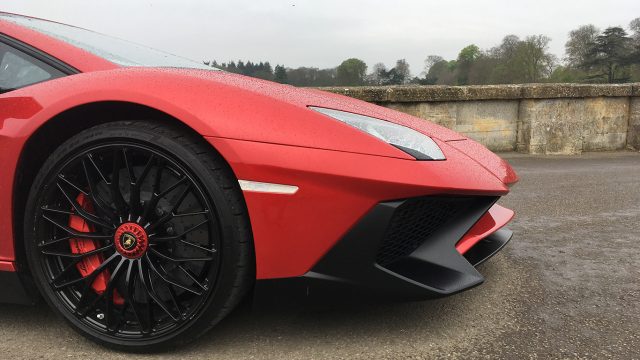
I start by taking a few moments simply to stand and stare. I’m not alone: a crowd of Blenheim day-trippers gathers, asking questions and taking supercar selfies. I walk around and drink in the details: the shark-like snout, gaping air intakes framed in naked carbon, louvred rear window (a Lamborghini trademark) and, of course, that towering rear wing.
Pardon the cliché, but the SV looks like it’s doing 200mph standing still. And people can’t get enough of it. The Ferrari parked alongside looks remarkably understated: a Learjet versus a stealth bomber.
Waking up the neighbours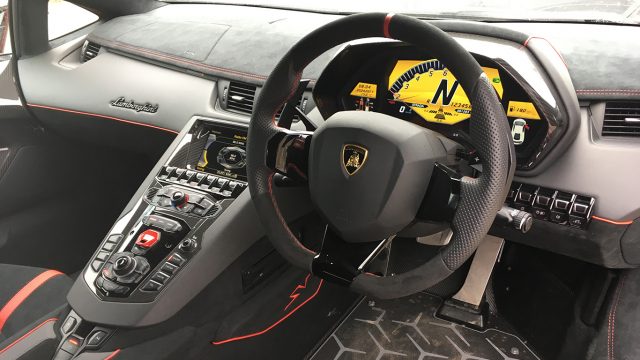
If half the visitors at Blenheim have already clocked the Lamborghini, the other 50% snap to attention when I flip the red ‘bomb switch’ cover and stab the starter button. With a theatrical blip of the throttle, the 750hp V12 barks into life, settling to a menacing idle that echoes across immaculate Capability Brown gardens.
I pull down the dihedral door via a small leather strap (this is a lightweight special, remember?) and adjust the mirrors. Mental note: the Aventador is A LOT wider at the back than the front. The pedals are skewed towards the centre, but the ‘long arms, short legs’ driving position of Italian supercars past is thankfully absent. Even the seats are comfortable – Andrew decided against the hard-shell buckets standard on the SV.
Unleash the beast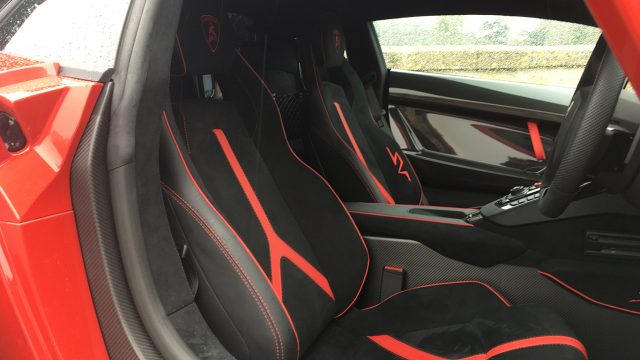
The exit road is peppered with speed humps, so I push the ‘suspension lift’ button and we crawl cautiously along. The mid-mounted V12 gargles and growls like a caged lion pawing at my shoulder blades. The ride feels racecar-firm, with very little travel from the in-board suspension, yet all the major controls, from the steering to the clutch pedal, move with weighty precision. It’s not difficult to go slowly, but neither would your grandmother feel comfortable driving it.
We turn onto a stretch of dual-carriageway and it’s time to let the Lambo off the leash. I shift to second, hit the loud pedal and – bam! – we lunge forwards like Bolt from the blocks. With four-wheel-drive traction, there’s no wheelspin: just grip and relentless G-force. I snatch third just before the 8,500rpm rev limit and by now we’re piling on serious speed – polite conversation suspended as cabin reverberates with Italian V12 thunder.
Lord of the ’Ring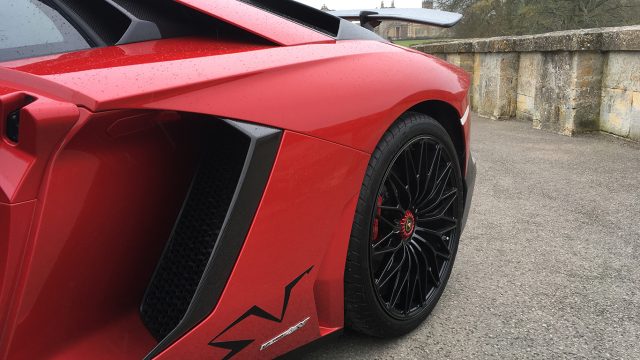
I steal a glance at Andrew: he’s grinning broadly. “Like riding a bull, isn’t it?”, he laughs. “You grab it by the horns and hang on.” It’s a good analogy – the Aventador feels totally unhinged, like being strapped to a heat-seeking missile. You’ll be lucky to use even a fraction of its performance on the road. On a race track, it would be an absolute weapon.
Want proof? A driver with vastly more talent than me lapped the Nürburgring Nordschleife in six minutes 59 seconds – just two seconds shy of Porsche’s 918 Spyder hypercar. Which proves the SV isn’t merely about straight-line speed. Along with the new (and Nürburgring record-breaking) Huracan Performante, it also shows Lamborghini is finally on par with Porsche and Ferrari for ultimate driving performance.
Wide and wild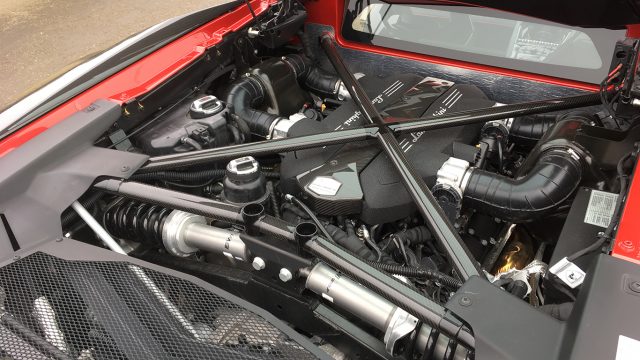
On rutted and occasionally narrow Cotswold lanes, however, the Aventador feels mildly out of its comfort zone. It’s savagely fast and utterly planted – you’d need to be a complete hooligan to unstick the rear end – but it’s also a big car. I involuntarily hold my breath every time a Range Rover or Transit van squeezes past.
The gearbox is the only other minus point. The seven-speed automated manual is whipcrack-fast when you’re pressing on, but feels a little clunky at low speeds. The latest dual-clutch ’boxes are smoother and just as quick.
Lights, camera, action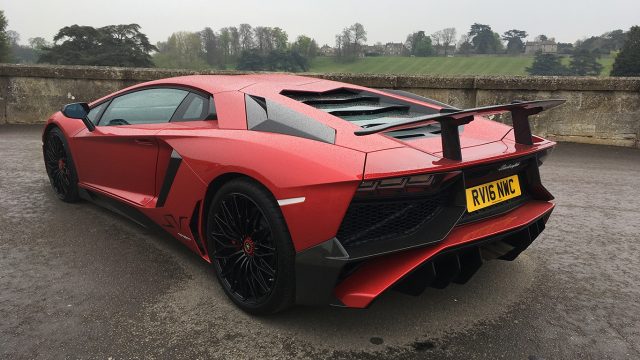
Heading back to base, we again reach a long stretch of straight dual-carriageway. I pull across into the outside lane and bury my right size-eight. Seven hundred and fifty Italian horses awaken and the scenery blurs into fast-forward. Imagine jumping out of a plane, but with carbon-ceramic brakes instead of a parachute.
Suddenly, blue lights appear. Andrew and I glance at each other in nervous silence. I slow to a steady 50mph and a Vauxhall Astra looms large in my mirrors, sirens wailing. Relief: it’s an ambulance car with no interest in this now-dawdling Lamborghini. But the experience serves as a stark reminder of the restraint needed to drive a 217mph supercar on the road.
Betting on black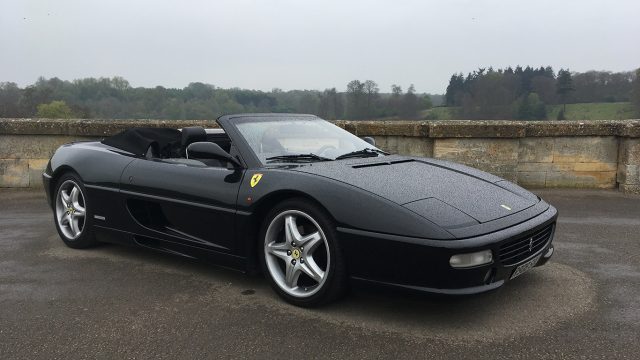
The Aventador leaves me wired and wanting more. Can David’s Ferrari possibly measure up? We grab a quick coffee first. “The F355 was on my bedroom wall as a kid – I’ve always wanted one,” he explains. “And it took me a long time to afford one, so this car’s a keeper. I don’t plan to sell it.”
In defiance of Ferrari purists, David shunned the iconic open-gate manual and sought out a F355 with the semi-automatic gearbox (badged ‘355 F1’). “I like paddle-shifters,” he explains. “That said, I don’t leave it in auto – I always use the paddles to change gear.”
Ageing gracefully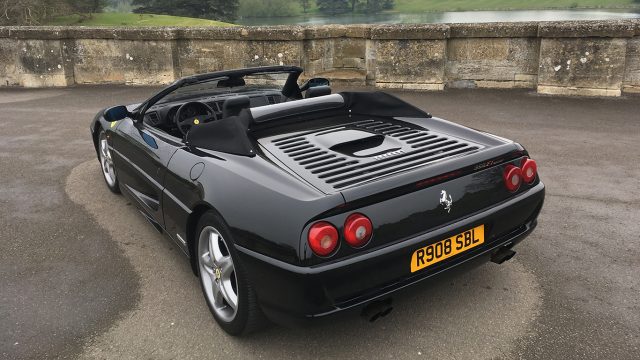
Me? I had a red Testarossa on my wall, but as a child of the 1980s, I automatically consider any car with pop-up headlights to be cool. It seems ironic that Ferrari designed the 355 with an F1-style flat undertray, then undid those aerodynamic gains with upright lights.
But no matter: this 20-year-old is ageing gracefully. It may even be the last genuinely beautiful Ferrari. While later models look increasingly aggressive, the 355 has the classic, almost dainty elegance of a 308 GTB or Berlinetta Boxer. It’s stylish, but not shouty.
Scintillating soundtrack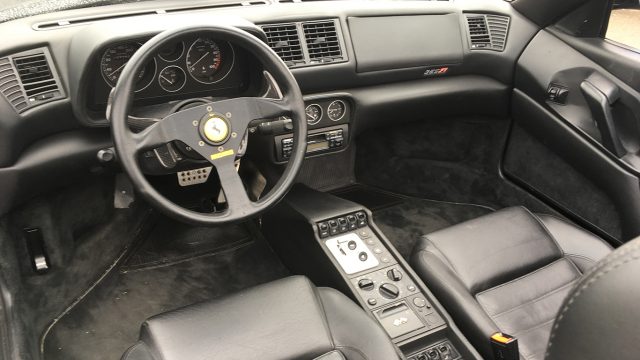
At least, not until I fire up the 3.5-litre V8. David’s car has an aftermarket Capristo exhaust and is even louder than the Aventador at idle. It hums with the undisguised potency of a naturally-aspirated engine that produces nearly 109hp per litre (380hp total): the highest specific output of any car at the time. With only a fabric roof between me and those four tailpipes, the cacophony fills the cabin and reverberates through my skull.
There’s a whole other dimension to the Ferrari’s soundtrack beyond 5,000rpm, though. At lower revs, the flat-plane-crank V8 is boisterous, but not especially tuneful. Only when you close in on the 8,500rpm redline (the same, incidentally, as the Lambo) does it shift up an octave, morphing into a high-pitched howl that has every hair on your body standing to attention.
Into the red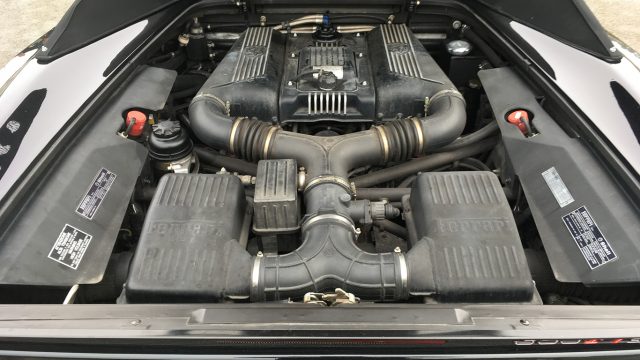
You need to work this engine hard to get the best from it, too. With a paltry 268lb ft of torque at 6,000rpm, the Ferrari is no quicker than many modern hot hatchbacks in everyday traffic. But then a gap opens, you drop a cog and it feels like a bona fide supercar again.
Cards on the table: I’d have my 355 with a manual gearbox – and no doubt pay a premium for doing so. But the F1 transmission, with its comically small lever on the centre console, is better than I’d been led to expect. The paddles move with mechanical precision, and the ability to upshift at full throttle keeps the engine spinning furiously. It’s rather more recalcitrant around town, but that’s also true of a manual Ferrari ’box. Ultimately, the faster you go, the better it gets.
The light fantastic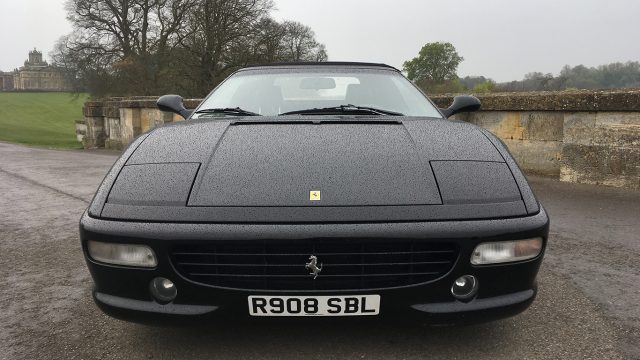
And believe me, it gets very good indeed. The 355’s steering is sublime – a reminder of how feelsome a hydraulic system can be in this era of anaesthetised electric helms. It’s slower and weightier than present-day Ferraris, yet still fabulously communicative.
On damp roads, I’m acutely conscious that, unlike every new car on sale, the 355 has no stability control. There’s no electronic safety net. Clearly, its limits are much lower than the ’Ring-slaying Aventador, but it doesn’t intimidate. Its suspension is supple and the whole car feels light on its feet. You couldn’t say that about a Testarossa.
Analogue to digital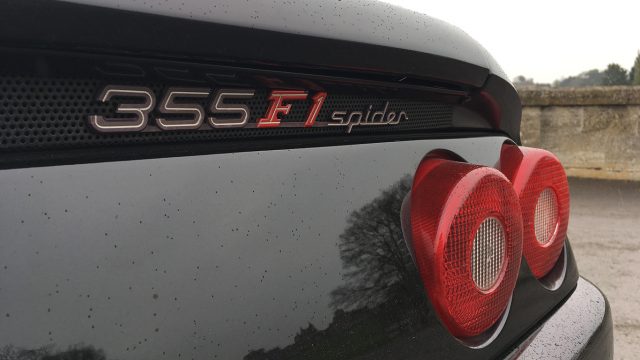
With its compact dimensions and unfiltered driving feel, the 355 reminds me of two other cars of this era. One is the original Honda NSX – the brilliantly usable Japanese supercar that showed up Ferrari’s below-par 348 and, ironically, forced the Italians to up their game with the 355. The other is the Porsche 964 Carrera RS, a raw road-racer with an equally charismatic engine and superb chassis.
There’s perhaps an argument that these were the last of the truly analogue sports cars. Electronics would soon infiltrate every area of car construction, to the benefit of reliability and safety, but often to the detriment of good old-fashioned fun. No wonder the prices of all three cars are heading skywards.
Picking a winner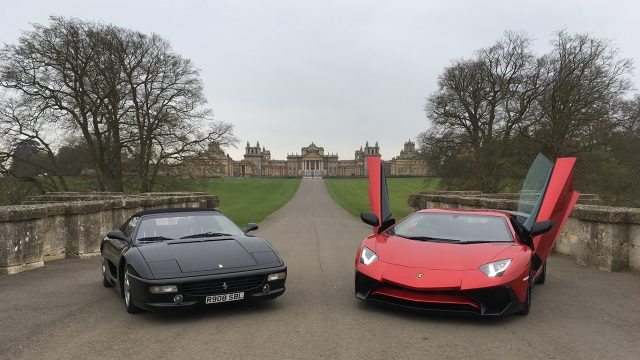
This isn’t a comparison test. Nobody is likely to whittle their shortlist down to an Aventador SV (from £280,000) or F355 (from £45,000). However, it shows how far high-performance cars have come in 20 years. These two share some similarities, but they could hardly feel more different.
The Lamborghini is awe-inspiring and magnificent; it’s the supercar turned up to 11 – a double Sambuca washed down with a Red Bull. I loved driving it, but can’t escape the feeling I’d lose my licence if I owned one. The 355 is more of a robust Italian red: equally intoxicating, but fun at saner speeds and a better fit for UK roads. It’s a tough call, but I’d take the Ferrari.